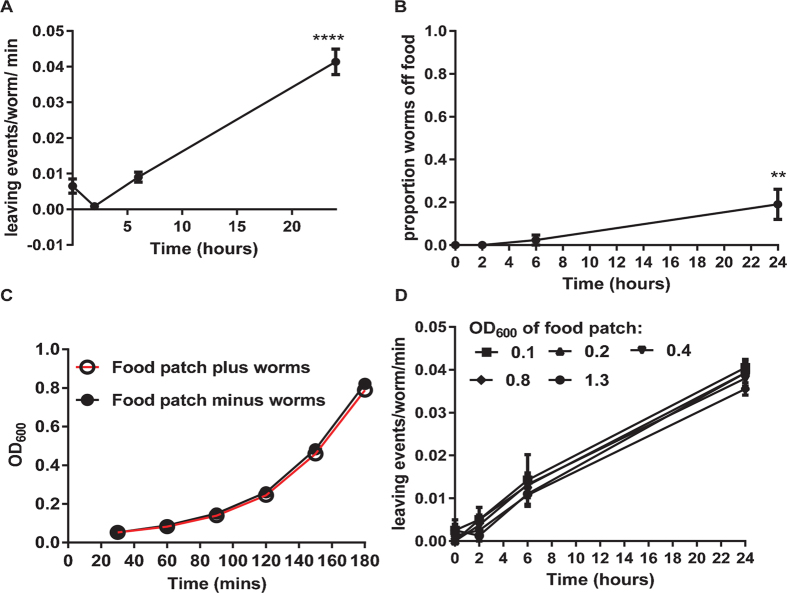Figure 1.
A food-leaving behaviour of adult wild-type N2 C. elegans that is not explained by depletion of the bacterial lawn. (A,B) Seven one day old adult wild-type (N2) C. elegans were placed on a defined bacterial lawn of E. coli OP50 and the number of leaving events scored for a period of 30 min beginning at the time points indicated. For each lawn the number of leaving events per worm was determined over the time-course and at each time point the ratio of worms off the lawn to worms on the lawn was counted. Data are mean ± s.e.mean for n = 6 lawns. One way ANOVA with Tukey’s multiple comparisons test; **P < 0.01, ****P < 0.0001. (C) At the end of the food-leaving assay the bacterial lawns were cut out of the agar plates and grown in LB broth at 37 °C. The growth rate of the bacterial lawns that had been exposed to worms (food patch plus worms) was compared to bacterial lawns recovered from plates cultured in an identical manner except in the absence of worms (food patch minus worms). Data are mean ± s.e.mean; n = 4. (D) One day old adult C. elegans were exposed to bacterial lawns of different optical densities and food-leaving scored as for (A). Data are mean ± s.e.mean for n = 4 lawns.

